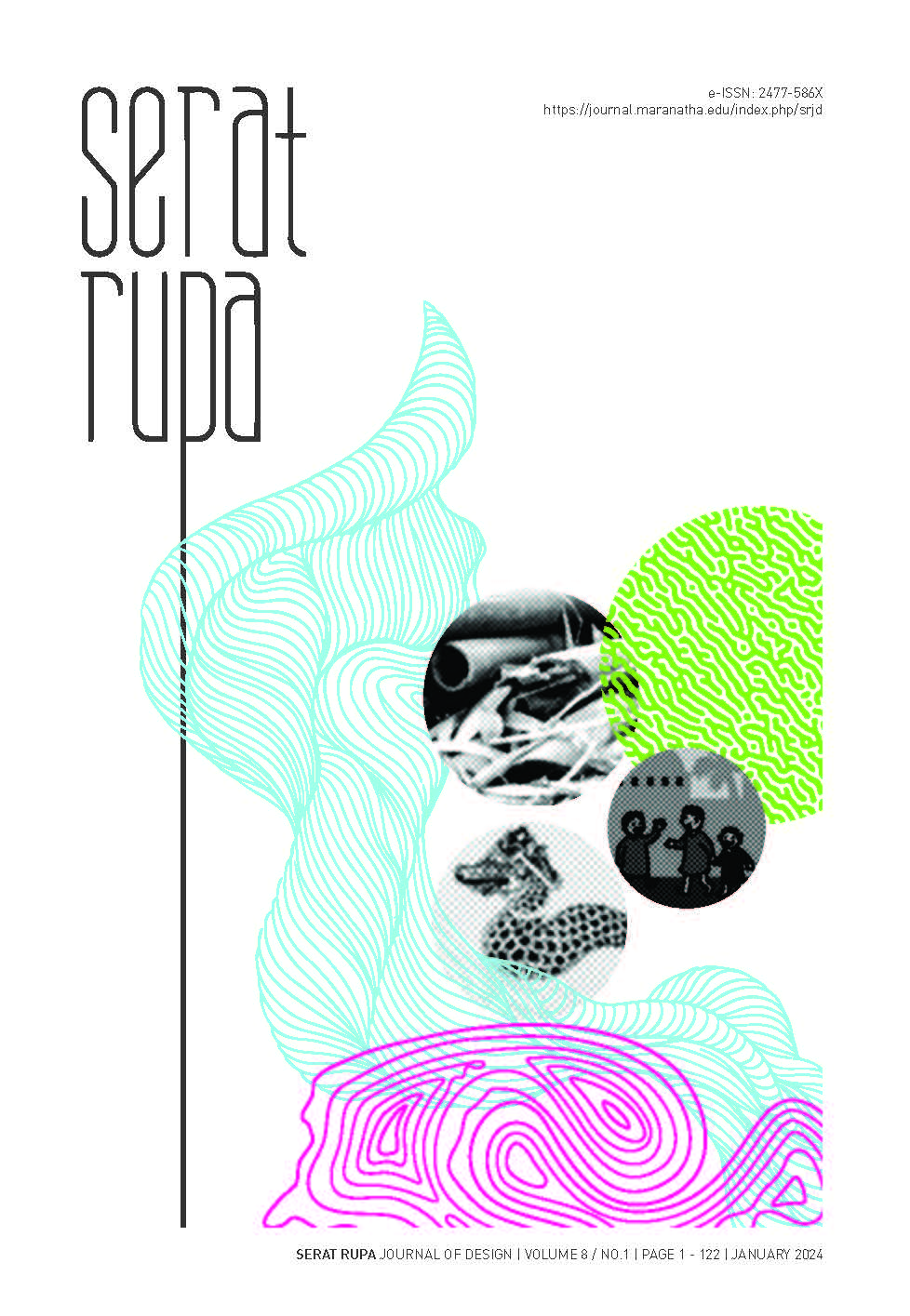Place Attachment and Consumer Revisit Intentions at Sundanese Restaurant
Main Article Content
Abstract
Downloads
Article Details

This work is licensed under a Creative Commons Attribution-ShareAlike 4.0 International License.
References
Bitner, M. J. (1992). Servicescapes: The Impact of Physical Surroundings on Customers and Employees. Journal of Marketing, 56(2), 56-71.
Desai, A. (2011). The function and design of cafés: Throughout Time. https://courses.cit.cornell.edu/dea150/files/2011%20files/Project%202.pdf
Ghozali, I. (2018). Aplikasi Analisis Multivariate dengan Program IBM SPSS 25.
Hashemnezhad, H. (2013). Sense of Place and Place Attachment. International Journal of Architecture and Urban Development, III. https://ijaud.srbiau.ac.ir/article_581_a90b5ac919ddc57e6743d8ce32d19741.pdf
Kim, W. G., & Moon, Y. J. (2009). Customers’ cognitive, emotional, and actionable response to the servicescape: A test of the moderating effect of the restaurant type. International Journal of Hospitality Management, 28(1), 144-156. https://doi.org/10.1016/j.ijhm.2008.06.010
Knapp, D. (2008). The Brand Promise: How Ketel One, Costco, Make-A-Wish, Tourism Vancouver, and Other Leading Brands Make and Keep the Promise That Guarantees Success. McGraw Hill Professional.
Kotler, P., Wong, V., Saunders, J., & Armstrong, G. (2010). Principles of Marketing (4 ed.). Pearson, Prentice Hall. https://library.wbi.ac.id/repository/212.pdf
Liu, P., & Tse, E. C.-Y. (2018). Exploring factors on customers’ restaurant choice: an analysis of restaurant attributes. British Food Journal, 120(6). https://doi.org/10.1108/BFJ-10-2017-0561
Low, S. M., & Altman, I. (1992). Place Attachment (Vol. 12). Springer https://doi.org/10.1007/978-1-4684-8753-4_1
Narimawati, U. (2007). Riset Manajemen Sumber Daya Manusia: Aplikasi Contoh & Perhitungannya. Agung Media.
Ryu, K., & Jang, S. S. (2007). The Effect of Environmental Perceptions on Behavioral Intentions Through Emotions: The Case of Upscale Restaurants. Journal of Hospitality & Tourism Research, 31(1), 56-72. https://doi.org/10.1177/1096348006295506
Scannell, L., & Gifford, R. (2010). Defining place attachment: A tripartite organizing framework. Journal of Environmental Psychology, 30(1), 1-10. https://doi.org/10.1016/j.jenvp.2009.09.006
Schiffman, L. G., & Wisenblit, J. (2019). Consumer Behavior. Pearson.
Suganda, H. (2008). Jendela Bandung: Pengalaman bersama Kompas. In (pp. 498): PT Kompas Media Nusantara.
Sugiyono. (2011). Metode penelitian kuantitatif kualitatif dan R&D. Alfabeta.
Swastha, B., & Handoko, T. H. (2000). Manajemen Pemasaran Analisa perilaku konsumen (2 ed.). Liberty.
Tjiptono, F. (2014). Pemasaran Jasa : Prinsip, Penerapan, Penelitian. Penerbit Andi Offset.
Wakefield, K. L., & Blodgett, J. (1999). Customer Response to Intangible and Tangible Service Factors. Psychology and Marketing, 16, 51-68. https://doi.org/10.1002/(SICI)1520-6793(199901)16:1<51::AID-MAR4>3.0.CO;2-0
Waxman, L. (2008). The Coffee Shop: Social and Physical factors Influencing Place Attachment. Journal of Interior Design, 31(3), 35-53. https://doi.org/10.1111/j.1939-1668.2006.tb00530.x
Williams, D. R., & Roggenbuck, J. W. (1989). Measuring Place Attachment: Some Preliminary Results. In Paper presented at NRPA Symposium on Leisure Research (National Parks and Recreation, Leisure Research Symposium ed.). San Antonio, TX.
Zeithaml, V. A., Bitner, M. J., & Gremler, D. D. (2013). Services marketing : integrating customer focus across the firm. McGraw-Hill.

